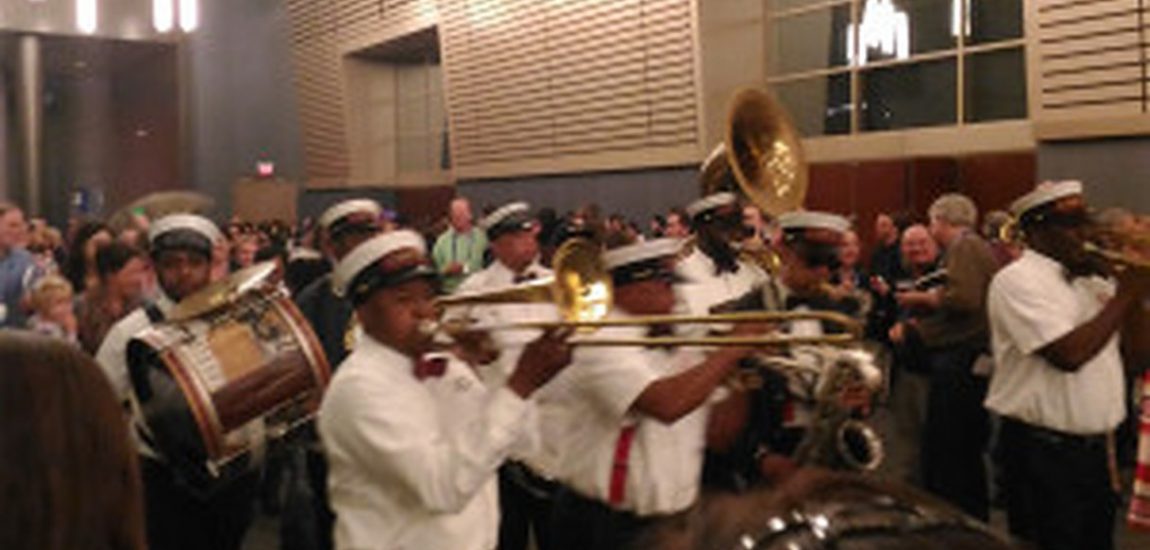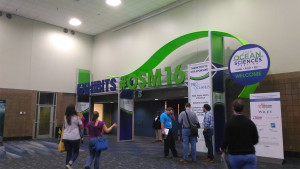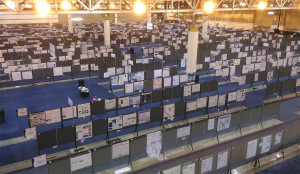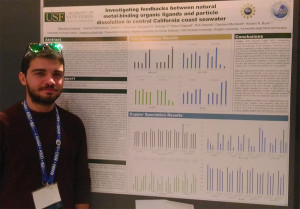
An ambassador at OMS 2016

The 2016 Ocean Meeting Science (OMS) took place 21-26 February 2016 in New Orleans (LA) at the Ernest N. Morial convention center. This conference is one of the most important and largest event for the oceanographic field; in fact, the Association for the Science of Limnology and Oceanography (ASLO), the American Geophysical Union’s (AGU) and The Oceanography Society (TOS) cosponsored it. The importance of the meeting drew attendees from all over the world, this big flux of people generated a huge event where it was possible to meet and speak with scientists across countless field and nationalities. During this occasion, I had a pleasure to present a poster titled: Investigating feedbacks between natural metal-binding organic ligands and particle dissolution in central California coast seawater. I want to thank the EAG and its Early Career Science Ambassador Program that made possible my presence at the OMS.
The meeting started with a small party with buffet on Sunday 21 evening. All the attendees had a lot of fun; there was also a live music band. From the day after, Monday 22, the meeting had a very busy schedule; the first session was always at 8 am. Every day was full of different sessions at different time until 4 pm. I had the privilege to hear very fascinating and multidisciplinary talks for the entire week. Moreover, some of these speeches gave me new ideas about my future research. It was impossible to attend all the presentations I was interested in. I appreciated the Chemical Tracers, DOM and Trace metal sessions more than the other ones, but this is for sure because of my personal interest. In general, all the primary topics were attractive and I think the organizations made a big effort in order to make the meeting enjoyable by everyone.
The poster sessions were from 4 pm to 6 pm, from Monday to Friday. I presented my poster on Wednesday. I am satisfied about the interest of the people about my job. I had many questions and some remarkable dialogue with famous scientists in my field. It was exciting to feel the interest of other researchers about my study.
Overall, I have never seen such a big meeting, there were more than 3000 posters and I do not know how many people around. The OSM 2016 was a wonderful experience and it motivated me to keep working in the research field.

About the author

Salvatore Caprara received his PhD in Chemical Science at the Università degli Studi dell’Insubria (Como, Italy). The development of procedures for the determination and speciation of trace elements in freshwater and seawater is the main research topic: iron and copper are prevalently investigated. He focused on the improvement of polarographic hardware, with particular emphasis on the reduction of sample volume. Achieving a greener approach in voltammetric analysis and, in general, in analytical chemistry by the improvement of analytical performances is the general target of his research. Recently he worked also on speciation analyses for iron and copper in seawater.
